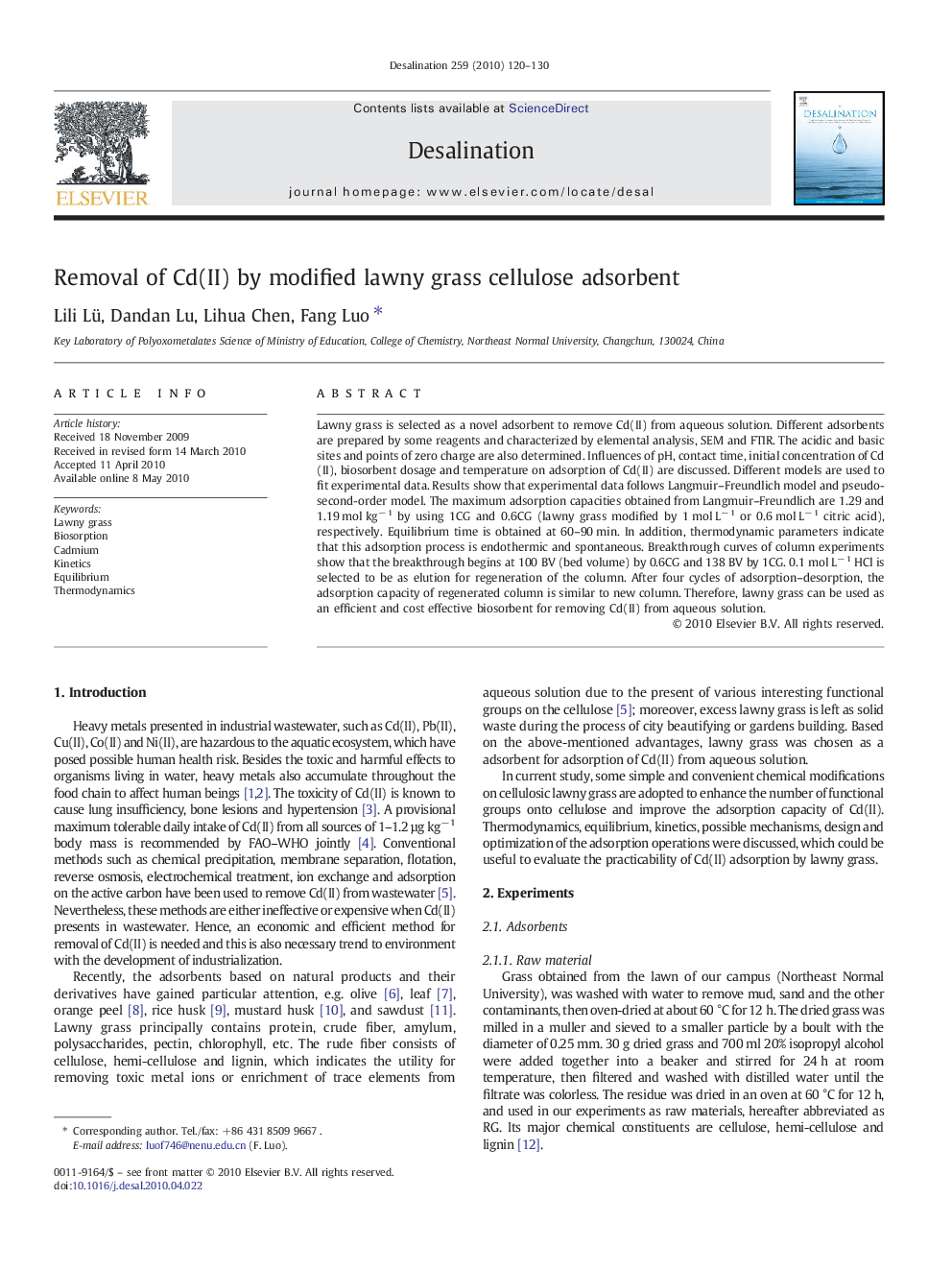| Article ID | Journal | Published Year | Pages | File Type |
|---|---|---|---|---|
| 625694 | Desalination | 2010 | 11 Pages |
Lawny grass is selected as a novel adsorbent to remove Cd(II) from aqueous solution. Different adsorbents are prepared by some reagents and characterized by elemental analysis, SEM and FTIR. The acidic and basic sites and points of zero charge are also determined. Influences of pH, contact time, initial concentration of Cd(II), biosorbent dosage and temperature on adsorption of Cd(II) are discussed. Different models are used to fit experimental data. Results show that experimental data follows Langmuir–Freundlich model and pseudo-second-order model. The maximum adsorption capacities obtained from Langmuir–Freundlich are 1.29 and 1.19 mol kg− 1 by using 1CG and 0.6CG (lawny grass modified by 1 mol L− 1 or 0.6 mol L− 1 citric acid), respectively. Equilibrium time is obtained at 60–90 min. In addition, thermodynamic parameters indicate that this adsorption process is endothermic and spontaneous. Breakthrough curves of column experiments show that the breakthrough begins at 100 BV (bed volume) by 0.6CG and 138 BV by 1CG. 0.1 mol L− 1 HCl is selected to be as elution for regeneration of the column. After four cycles of adsorption–desorption, the adsorption capacity of regenerated column is similar to new column. Therefore, lawny grass can be used as an efficient and cost effective biosorbent for removing Cd(II) from aqueous solution.
